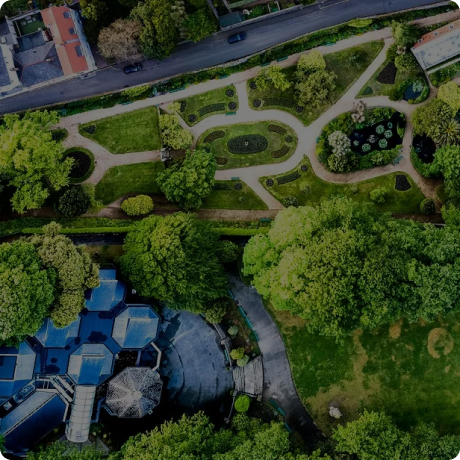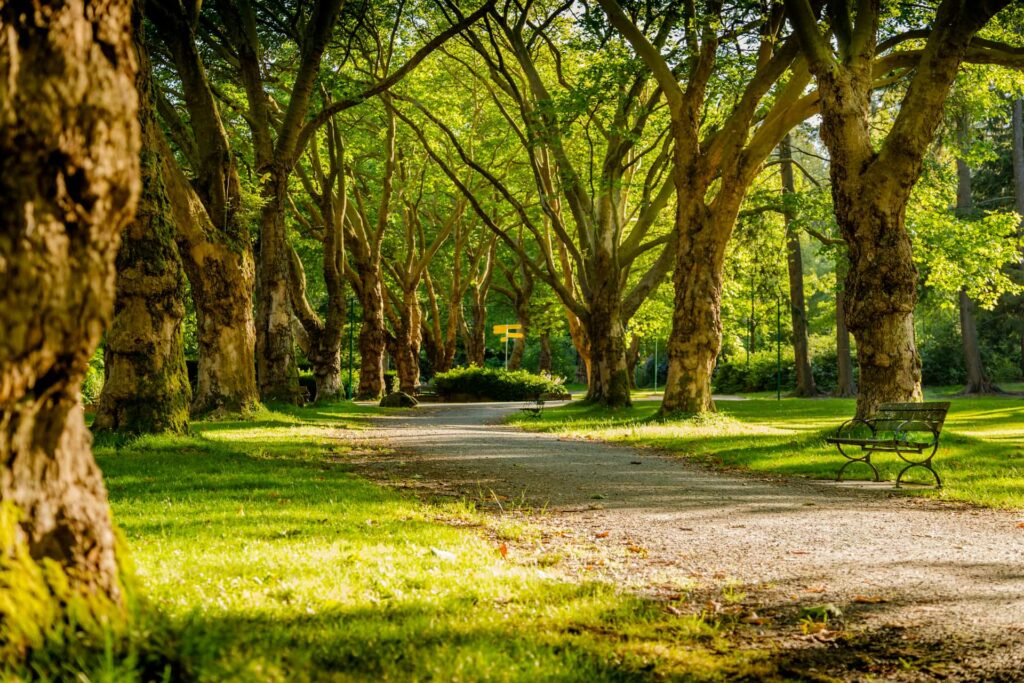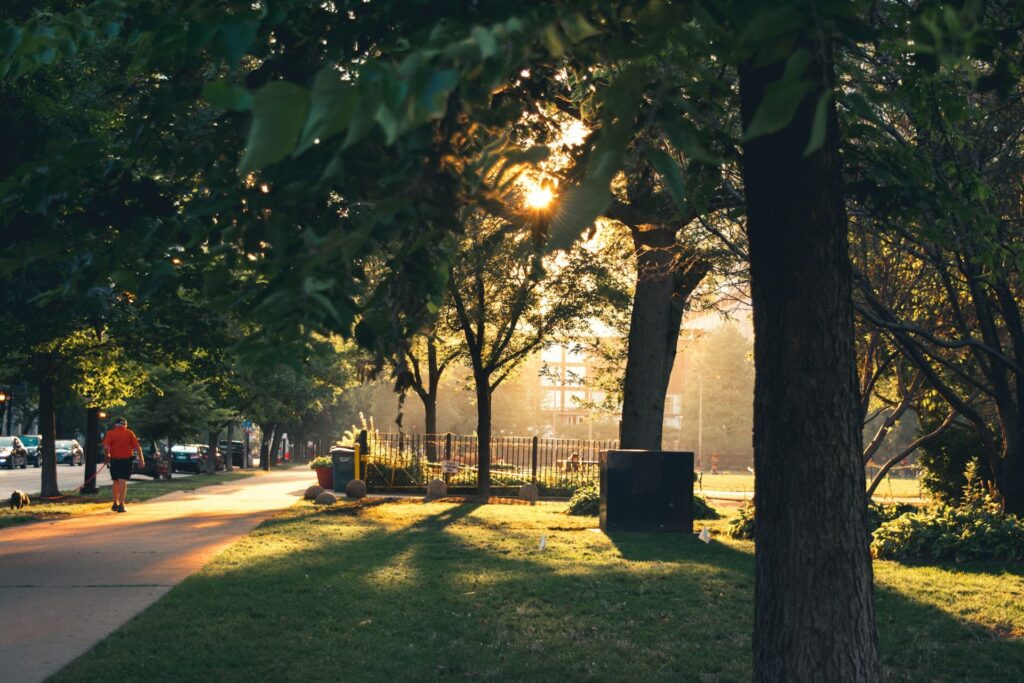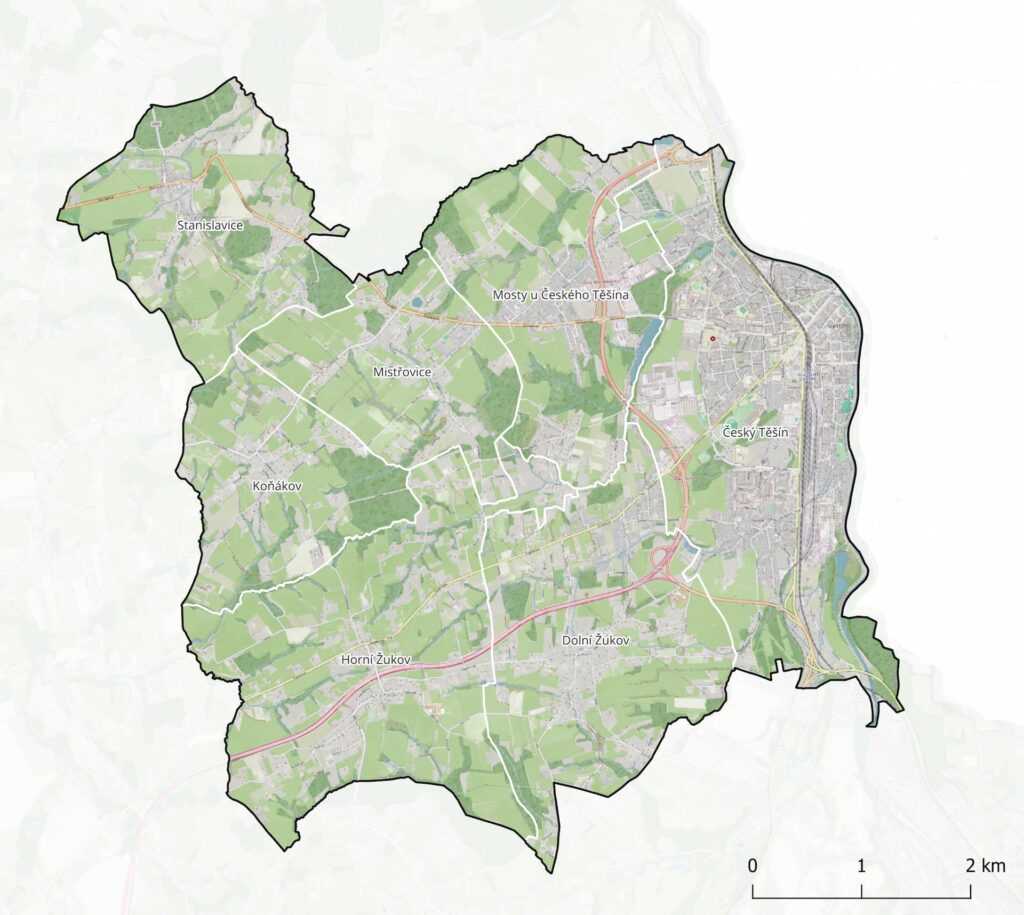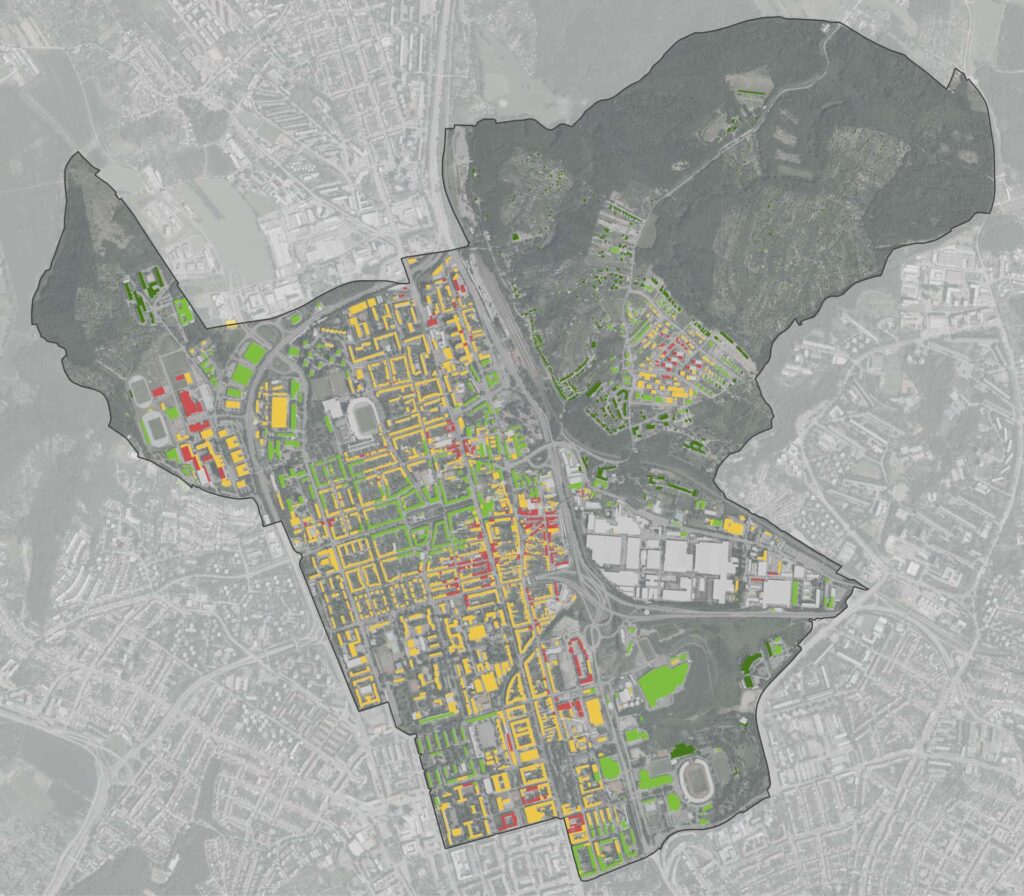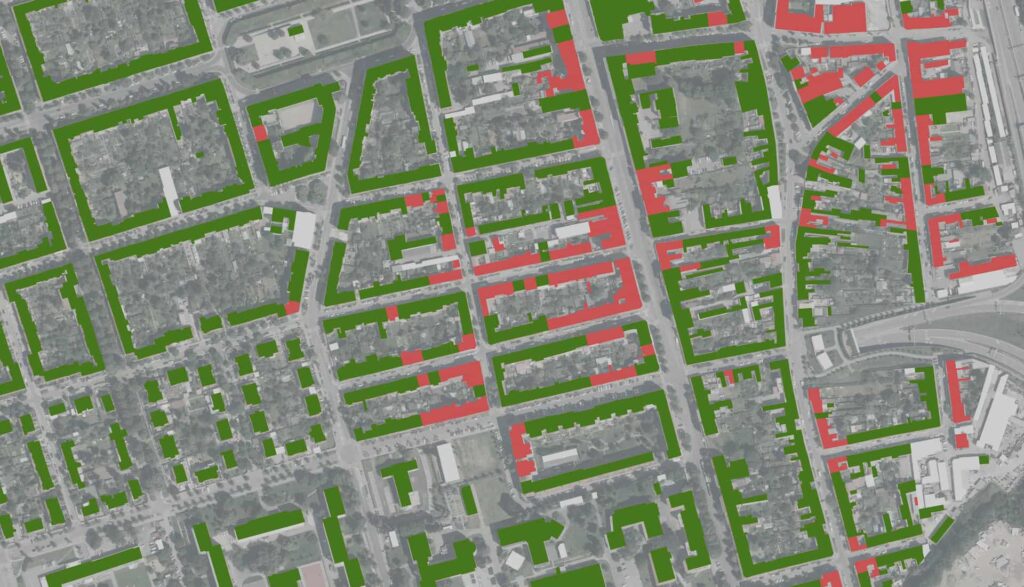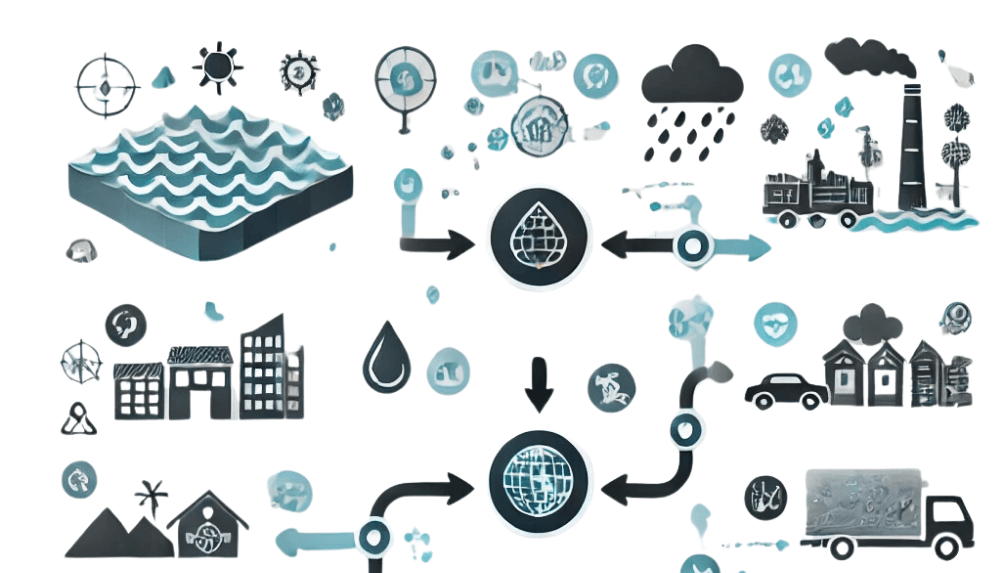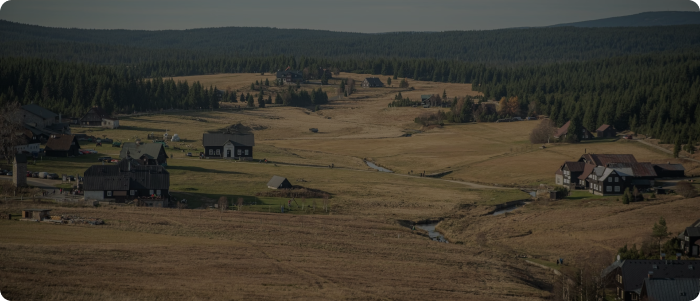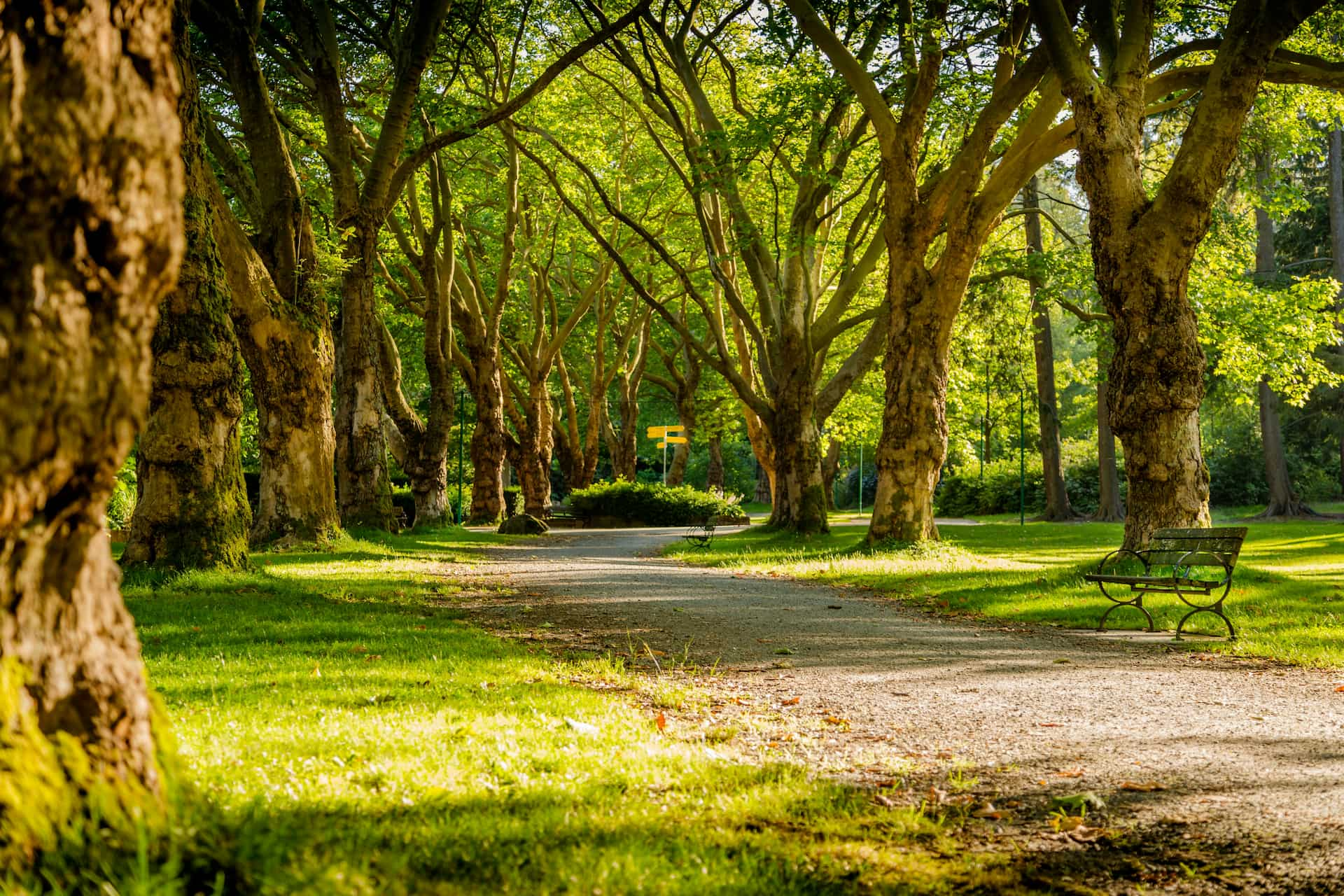
Adaptation measures are divided into 3 main groups:
Blue-green measures (ecosystem-based)
Gray measures (construction-technological)
Soft measures (behavioral and organizational solutions)
Green, blue, and gray measures can be standalone, but often they are interconnected and implemented as a whole. An example of combining green and blue measures is the creation of water bodies including accompanying greenery, where rainwater from adjacent paved areas is directed into gentle terrain depressions for infiltration, or promoting water infiltration using grassed strips. In building adaptation measures, there may be a connection of all three types of measures – for example, technical shading elements (gray), green roofs or facades (green), and rainwater tanks (blue).
Grey measures
Construction-technological measures, particularly those on buildings and infrastructure. Traditional gray measures had the disadvantage of typically fulfilling only one function (for example, ensuring the quickest possible runoff of precipitation from an area).
Currently, a comprehensive approach is applied, and gray measures have taken on a new form, often combined with ecosystem-based measures (sometimes referred to as “hybrid” or “gray-green” infrastructure, which combines the benefits of gray measures with the advantages of ecosystem-oriented measures). Example: thermal insulation of buildings, shading (both vegetative and technical elements), ventilation, air conditioning units, as well as traditional dikes, floodplains, embankments, drainage systems, stormwater sewers, and retention tanks. The construction of water bodies and small reservoirs is often linked with technical measures, such as dams for flood protection. Key is the application of elements in rainwater management including impervious, permeable, and semi-permeable surfaces. Such measures, combined with gray, as part of regular construction, belong to economically efficient projects that ensure long-term sustainability of investment actions in the area of nature-close measures.
Blue and green measures
Soft measures
The most important in terms of adaptation measures are those that reduce risks arising from extreme weather fluctuations.
A typical example of extreme weather fluctuations includes flash floods. Generally, the increasing risk of floods in built-up areas is exacerbated by the expansion of built (and therefore impermeable) surfaces due to ongoing urbanization and the expansion of settlement areas. Adaptation measures in this regard recommend the expansion of infiltration zones and areas where excess water can be dispersed without major consequences.


In the future, there is also an expected trend of more frequent occurrences of very hot summer months, causing widespread droughts and fires. Adaptation measures should aim to reduce heat islands, strengthen blue and green infrastructure, and increase the proportion of permeable surfaces.
Higher temperatures may also cause severe damage to railway tracks and roads, thus threatening the comfort of travelers and the quality of transport services.
Expected milder winters will lead to a reduction in the number of days with frost and snow, thereby reducing the costs of road maintenance. This associated continuation of the observed trend in reducing the energy intensity of winter heating will, on the other hand, be balanced by increasing demands for cooling and air conditioning in the summer periods. It is therefore likely that the annual peak demand for energy will gradually shift from winter to summer.
